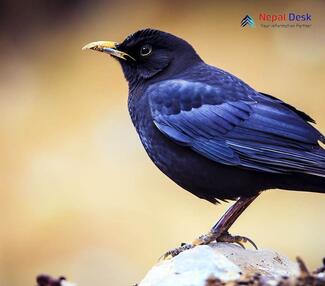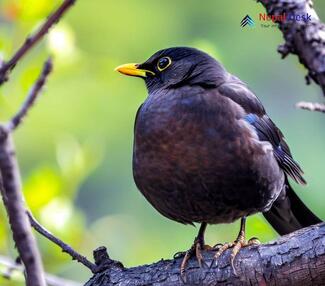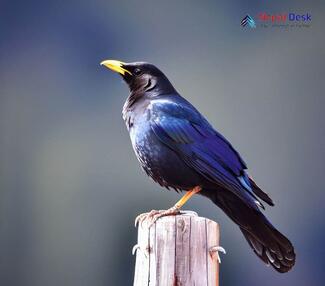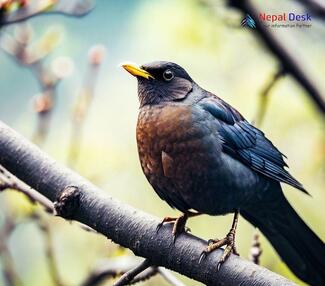The fascinating realm of birds provides a treasure trove of discoveries for ornithologists and bird lovers alike. One of these mesmerizing creatures is the Tibetan Blackbird (Turdus maximus mandarinus), a bird that has certainly won the affection of many people. This article delves into the qualities, habitat, behavior, and presence of this captivating bird in Nepal.
A Glimpse at the Physical Traits
The Tibetan Blackbird (Turdus maximus mandarinus) belongs to the larger Turdus maximus family as a subspecies. Boasting an average length of 27 centimeters and weighing about 150 grams, this bird showcases a graceful yet robust appearance. Its feathers are mostly black, with prominent yellow splotches around its eyes and a yellow-orange beak. Females display slightly more muted colors, featuring dark brownish-grey plumage.
Home Turf and Distribution Range
The Tibetan Blackbird calls the lofty heights of the Himalayas home, where it favors coniferous and mixed forested areas. They can be found at altitudes between 2,800 and 4,200 meters above sea level. The key areas in which they dwell include China, Bhutan, and Tibet; however, they have also been sighted throughout various regions in Nepal.
Existence in Nepal
In recent times, sightings of the Tibetan Blackbird across Nepal have generated excitement among bird enthusiasts and researchers alike. They have been observed not only within well-established bird hotspots but also in lesser-known areas of Nepal. The country's protected regions such as Langtang National Park and Sagarmatha National Park provide crucial habitats for this species because they offer pristine environments with high-altitude landscapes.
Behavior Patterns and Food Choices
As primarily ground-dwelling birds, Tibetan Blackbirds are often spotted hopping about on the ground hunting for food, or perching on tree limbs while melodiously singing. Their diet is predominantly composed of insects, earthworms, and berries. Breeding season takes place from April to July, during which time they construct nests and lay eggs. The female assumes the role of egg incubator, while both parents undertake the task of feeding and nurturing their offspring.
Preservation Status
Even though the Tibetan Blackbird is not currently recognized as an endangered or vulnerable species, it remains imperative to keep a watchful eye on its population in Nepal and assess potential risks such as habitat loss or climatic shifts. A thriving population of this avian variety contributes to maintaining a balanced ecosystem within their habitats.
To sum up, the Tibetan Blackbird (Turdus maximus mandarinus) is a captivating bird species that intrigues casual onlookers and devoted ornithologists alike. Nepal plays a vital role as a sanctuary for these birds, reflecting the nation's remarkable biodiversity. By pursuing further research on this species and employing conservation efforts when needed, we can strive to safeguard these magnificent birds for future generations to cherish.




